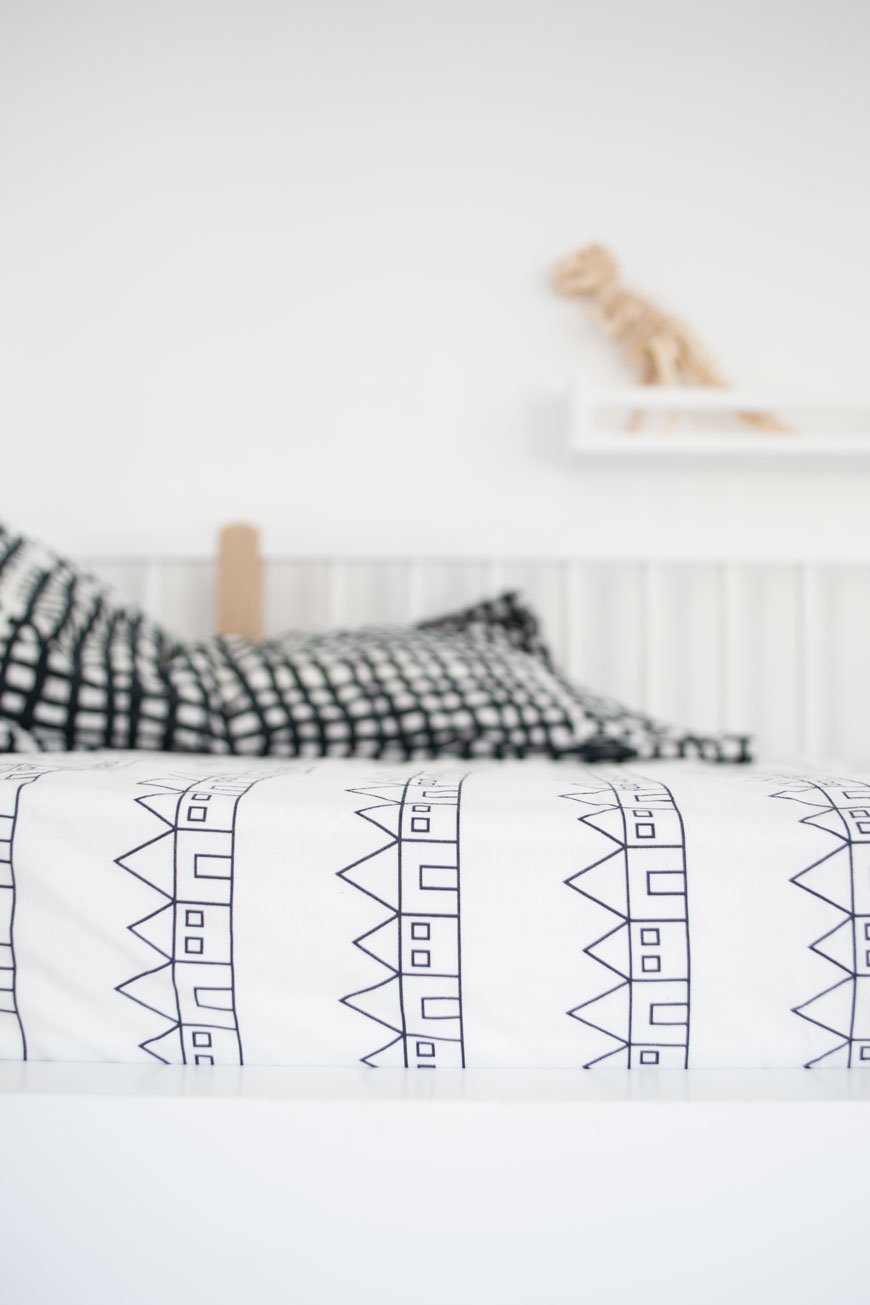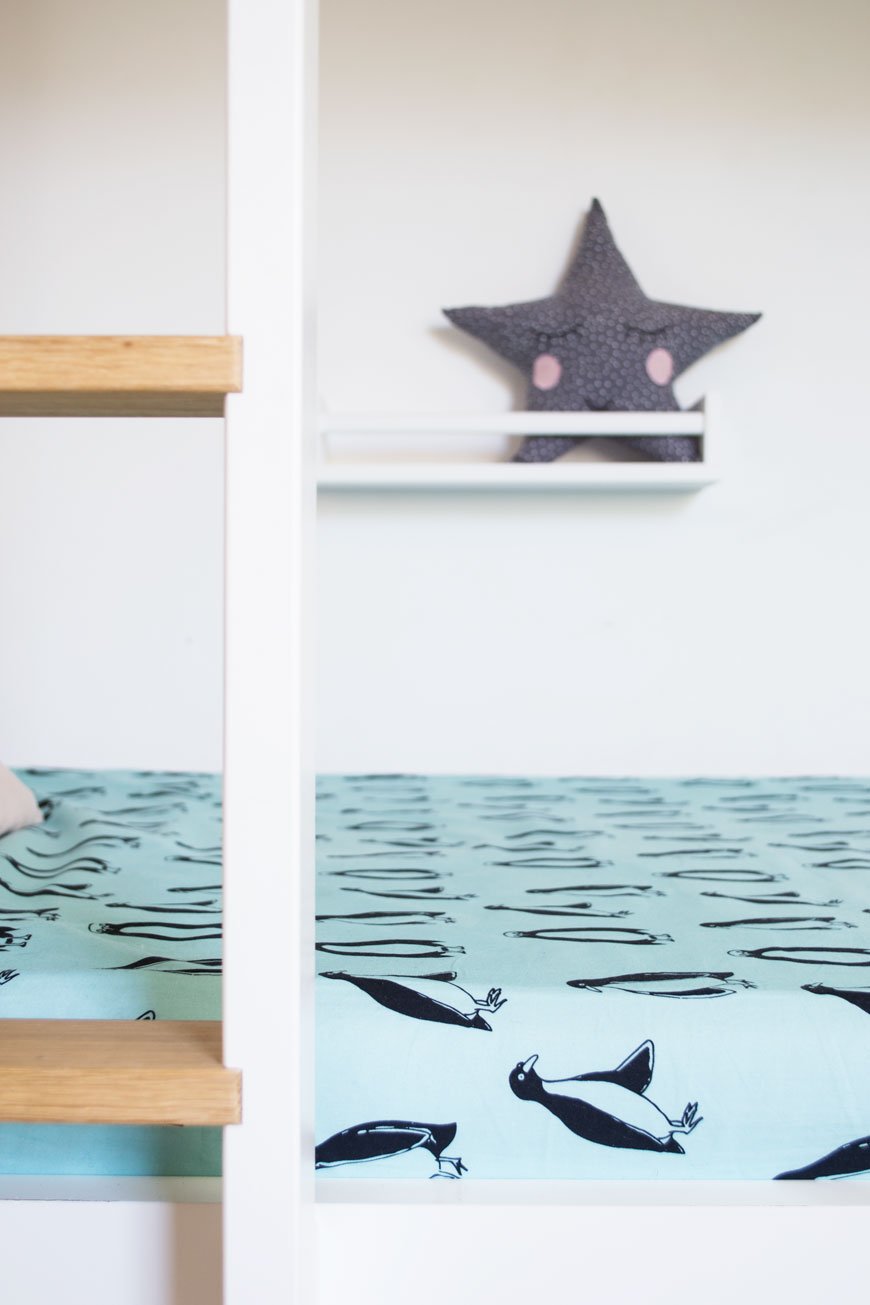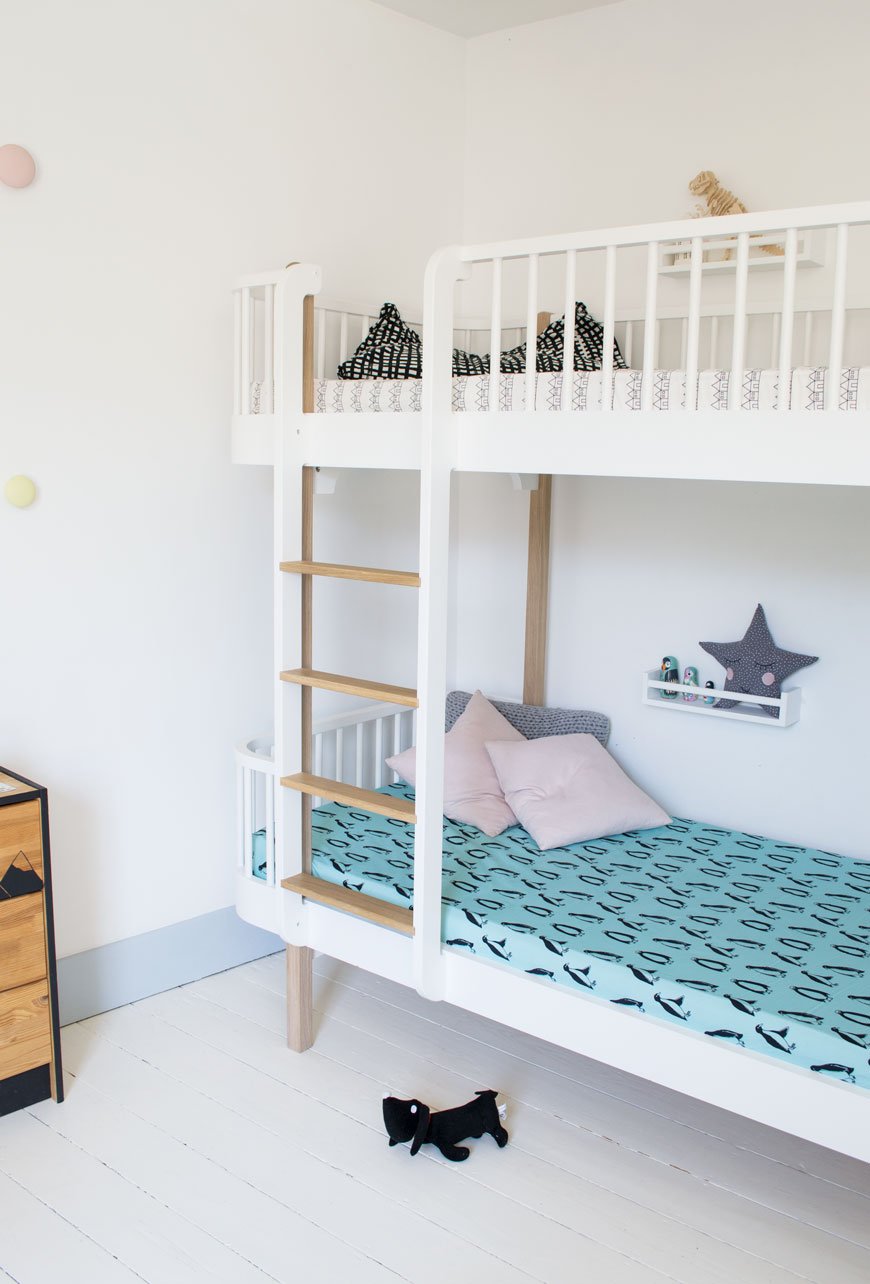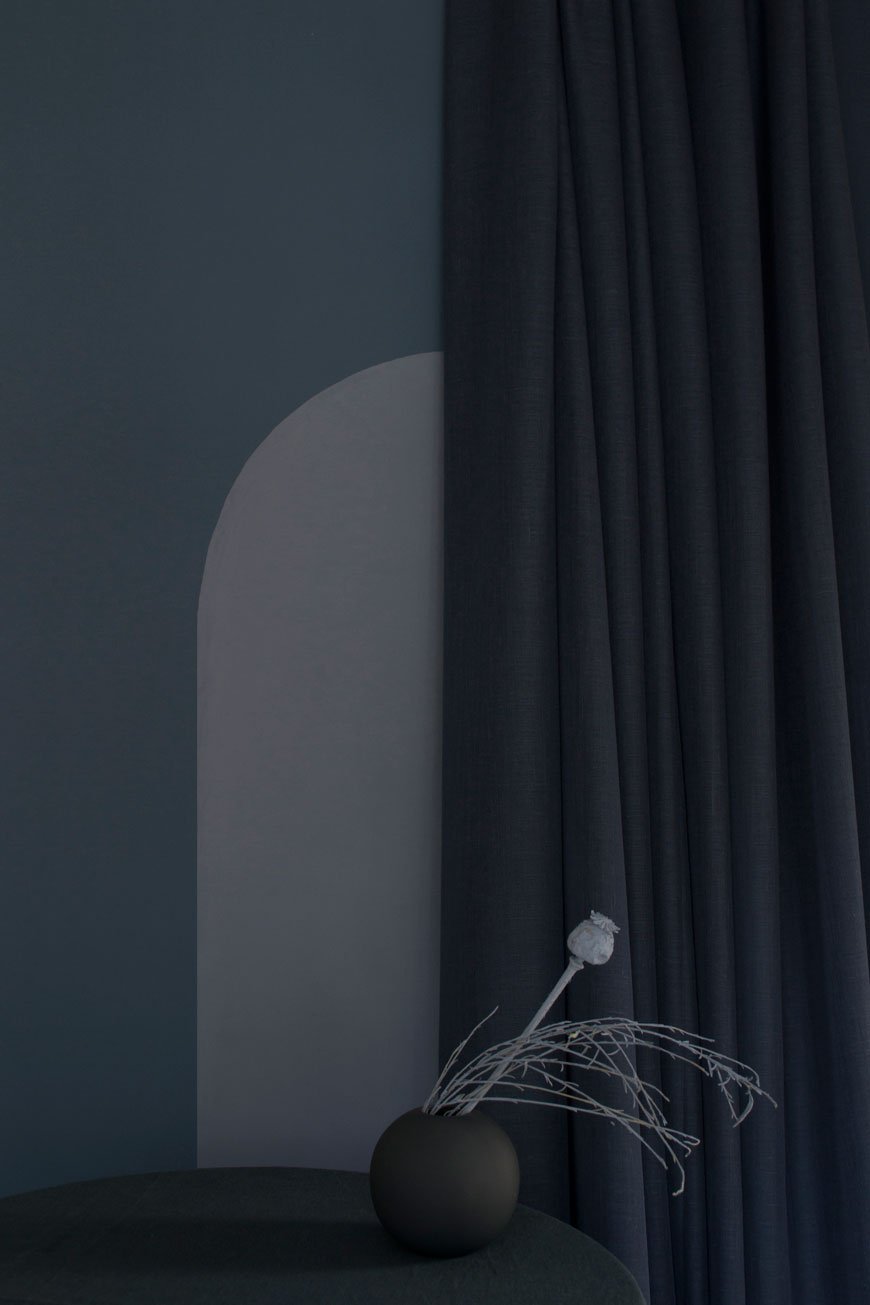Foraged Warm And Natural Nordic Christmas Table
Hey, how are you feeling? Honestly? I'm exhausted. And I know I'm not the only one. What a year! Despite all the waves of uncertainty and change we've been riding, I wanted to keep some things the same here. And with Christmas just around the corner, its time to uphold the yearly tradition that I have with you - sharing festive table styling inspiration.
A Foraged Nordic Christmas Table
I wanted the table to feel comforting, intimate. A space that draws the family together under the glow of candlelight. Our gatherings are going to be smaller this year and with this in mind, I'm suggesting using what you have to hand. The key to this Nordic look is the natural elements of rustic bracken fronds, branches and neutral tableware.
My little table for four includes treasures that I return to all year round; a vintage cake stand and a collection of wooden candle holders I found in a charity shop years ago. Simple, pale tableware in some newer additions from the summer are courtesy of Urbanara.
This is a fuss-free, tonal look without a traditional centrepiece. Instead, a hanging installation of 'old man's beard' has become a softer, textural focal point. It that draws the eye down to the table and allows you, your guests and the food to be the centre of attention.
This was my first attempt at a floral cloud installation and it was so easy to do. Rob and I went to take cuttings from a spot where I knew there'd be an abundance of wild-growing clematis (also known as 'Old Man's Beard') and filled up a big bag. Using a chicken wire frame hung with strong, clear thread, you build the arrangement by threading the stems through the frame. Eventually, you'll create a full shape you're happy with. Where I found there were gaps, I filled them up with cut grasses from my garden.
I filmed the process and put together a quick floral cloud tutorial on IGTV if you want to create your own. Do it - the results are breath-taking!
A Sweet Table
Close-up image of glossy, deep wine red mulled poached pears ontop of a brown sugar pavlova for the Christmas table.
Baking is my go-to for comfort at this time of year. It's my way to unwind and spend time alone with my thoughts. I found a gorgeous Waitrose recipe for a brown sugar pavlova with hazelnut praline and poached pears. And my god it's incredible. Such an indulgent dessert, perfect for a Christmas celebration. From the spiced mulled pears and chewy meringue to the all-important sweet toasted nuts. This is the one.
I also tried my hand at a vanilla marshmallow recipe that I found via Benk and Bodega. Perfect for little snacks or to top hot chocolates and my daughter loved making these together. Check out their 'Advent' stories highlight for the recipe, written by Emma Cantlay at Mainly Breakfast.
Candles are the one thing I always buy new every year as we get through so many. These soy wax twisted candles are from Interlude Candles on Etsy. And I've created a brilliant sculptural candle edit if you're looking to up your candle game this winter.
So there we have it - my Nordic Christmas table for 2020. If this look doesn't float your boat, check out my gold and pine table garland and a moody, minimal festive style.
All that's left for me to do is to thank you for sticking with me throughout this crazy year. Wishing you a safe, warm and slow Christmas and I'll see you in 2021.
Tiff x.
Photography and styling © Tiffany Grant-Riley
Sustainable Furoshiki Fabric Gift Wrap
This post features Furoshiki fabric gift wrap pr samples from Projekt Henri. Shop has since closed.
Furoshiki is the ancient Japanese art of cloth wrapping, used to present gifts and carry food in place of paper or other modern-day plastics. To this day, there are shops dedicated entirely to these fabrics and it's considered rude to present a gift that hasn't been beautifully presented. Which stands to reason, doesn't it?
A classic Furoshiki '4 Tie' made by tying opposite corners together.
Christmas is always a chilled, low-key affair in our house. And while we are always mindful to use recyclable wrapping paper, I'm exploring paper-free gift wrapping solutions with reusable fabrics to avoid creating more landfill. There's something about the simple, delicate folds of soft cotton lovingly finished with a flourish of dried grasses or cuttings from the garden that takes gift-giving to a whole new level. The best part is, this wrap can be reused, over and over again. No waste. And if there's anything we can take away from the lessons of this crazy year, it's that slowing down and taking time to think about the way in which we share our planet is extremely important.
Because I'm super helpful, I've created a Furoshiki tutorial on my IGTV. I'm showing you 3 ways to use eco-friendly fabric to create 'The Envelope', 'The Twist' (great for cylindrical gifts) and the classic '4 Tie'. With a bit of practice, you'll be knocking everyone's Christmas socks off in the stylish wrapping stakes.
'The Twist', created by gathering the four corners on top and twisting each one round before tucking it in.
You can use any soft fabric though cotton and silk work best in something with a high opacity so as not to give it away. If you do choose to use sheer fabric, double up with another thicker fabric underneath.
I've used reusable Furoshiki fabric wrap in organic cotton in three colours and sizes from Projekt Henri.
Happy Wrapping!
Styling and photography © Tiffany Grant-Riley.
Sustainable Decorating | A Guide To Eco-Paint
[Advertisement] *Includes gifted and loaned product for the purpose of this post.
Graphenstone GrafClean in Vintage* | Zumirez boucle wool fabric in 'Moonbeam', Zinc Textiles* | Kuru ceramic bowl, Iittala* | Aino oak mirror, Skagerak* | Ridged tea-cup, Rose & Grey*
In recent years the paint industry has been making huge strides to clean up its act in the effort to produce more environmentally friendly paints. We now have so many options to help create a more sustainable home so why shouldn’t the paint we use reflect that choice?
As we move deeper into our renovation journey, I’m more mindful of the products I choose to use as part of our projects. If you're reading this then chances are you are too. Using accredited eco-paint means working towards a cleaner environment while improving the conditions inside our homes.
Of course, with so many options on the market selling us various benefits all under the umbrella of 'eco', 'organic' and 'non-toxic', it’s hard to know who to listen to. The information out there isn't always clear as to whether you're buying into a genuine product or just green-washing. No paint is 100% environmentally friendly but this simple and transparent guide to eco-paint will help clear up those questions when it comes to choosing the right paint for your home.
WHAT'S THE DIFFERENCE BETWEEN SYNTHETIC AND ECO-FRIENDLY PAINT?
Your average tin of paint from the DIY store will contain synthetic, plastic and petrochemicals and VOCs used to maintain its strength of colour, durability and general consistency.
Eco-friendly paint is comprised of naturally occurring materials, based on lime or a variety of clay and/or marble with natural pigments and oils. As a mineral-based product, their micro-porous qualities allows moisture to escape so your walls can breathe, doubling down on mould and damp. Ideal for an older property.
LET'S TALK ABOUT VOCS
Those synthetic chemicals I mentioned above include VOCs or ‘Volatile Organic Compounds’. These carbon-based substances emit vapours or gases that evaporate at low temperatures. You’ll often find them in other everyday products such as air fresheners and cleaning products and used in paint they're there to improve the consistency and drying process.
Current UK legislation states the maximum VOC content in a tin of interior emulsion is 30g per litre.
The effects of these can aggravate allergies or leave you feeling dizzy or nauseous amongst other reactions (and I think we’ve all felt that way at some point with a paintbrush in hand). Synthetic paints contain ingredients derived from plastics and can include formaldehyde and other petrol-chemicals which are known carcinogens. These evaporate into the air as the paint dries but can also exist on your walls for years afterwards, continuing to release into your home. Not a comforting thought.
Graphenstone GrafClean in Premium in 'Olive', small ball painted in 'Kombu'* | Hoxton 'Olive' gloss porcelain tile, Mandarin Stone | Linen blend Azuri fabric in 'Endive' fabric, Romo Textiles*
IS THERE ANY SUCH THING AS A ZERO VOC PAINT?
No. It’s impossible to be completely free of VOC emissions - did you know that burning fuels such as wood and coal releases these too? That said, paint can be classed as ‘zero VOCs’ when the level of which is negligible or up to 5 grams per litre.
WHAT ARE ECO-PAINTS MADE FROM?
There's no standard recipe as each brand varies but common ingredients include oils such as orange, linseed and castor as well as resins, silicate, lime and chalk. Natural pigments which create the colour are derived from plants, though in some cases these may come from insect or animal bi-products so if it's a vegan paint you're looking for its worth checking the list of ingredients first.
Graphenstone GrafClean Premium in 'Oxford' blue with an arch of 'Blue Steel'* | Ball vase, Cooee Design* | Bergen 'Smoky Blue' linen-look fabric, Villa Nova*
DO ECO-PAINTS SMELL?
Having used two different eco-paint brands, I can't deny that they don't come with a certain fragrance - they do. On the whole, however, it dissipates fairly quickly and thankfully doesn't contain harmful chemicals that you'd normally breathe in with standard synthetic paint.
ARE ECO-PAINTS AS DURABLE AS STANDARD PAINT?
Yes, they really are - washable and durable with options for woodwork and exteriors too. It's no longer a compromise to use ecological paints and you don't have to settle for a limited colour palette either. It's a no brainer, right?
BUT it's worth noting if you love the textured effect from traditional lime paints, these don't include additives to aid durability meaning if you're after wipeable walls, it's not the right one for you. These paints mark easily and will need recoating to cover them.
AREN'T ECO-PAINTS MORE EXPENSIVE THAN OTHERS?
There's not a huge difference in price between an eco-paint and other premium brands but they are definitely more expensive than a basic range of synthetic paint. What you pay for is the quality of and higher concentration of natural pigments. The better the quality, the more depth and ability they have to absorb light - this creates nuances of tone depending on the light coming into the room.
So is it worth the investment? Having used a range of paints across the board over the years I would say hands down, yes. Health and environmental benefits aside, you will ultimately save time choosing a better quality paint for coverage, consistency and durability.
An Exploration of Graphenstone Paint - A Lockdown Project
In anticipation of painting our hallway, I've been getting to grips with Graphenstone Paint's range of GrafClean Premium colours. Having heard such great things about them, I wanted to explore their range and try to settle on a colour. You won't find it here though - the result of these images comes from a lockdown challenge I set myself to create four contemporary tonally styled scenes using a selection of colours I think are currently popular or are set to enjoy a moment in our homes over the coming years. From top to bottom you'll find 'Vintage', a subtle beige with lilac tones, 'Old Lilac', a slightly aged pink, 'Olive' and 'Kombu' greens which connect us with nature and a deep 'Oxford' blue, contrasting with a lighter shade of 'Blue Steel'.
Holding 18 certifications and being a popular choice among architects and designers, Graphenstone Biosphere paints absorb CO2 directly from the environment thanks to their high concentration of lime. This air purifying paint removes 40% of CO2 within the first 30 days, continuing over 2 to 3 years. Their products are formulated with a lime base with added Graphene for durability, claiming to be 200x stronger than steel. Three 15litre pots absorb 15kg of CO2. If that doesn't grab your attention, I'll eat my hat.
The colours have great depth and excellent coverage- I painted their range of GrafClean colours straight on to plasterboard using a mix of brush and roller, though you'll get a more even finish with the latter. This product is matt, breathable and washable and rated the No.1 World's Most Certified Green Brand. Can't wait to use it for the rest of the house!
I'd love to hear your thoughts - have I persuaded you to take the eco-paint plunge?
These images were created using colours from the eco-paint brand Graphenstone, who provided the paint for the purpose of this post.
Styling and photography © Tiffany Grant-Riley
[AD] How To Decorate With Limewash Paint - Breathable Eco Paint From Bauwerk Colour
[Advertisement - this guide on how to use limewash paint was made in partnership with Bauwerk Colour who supplied the product for this post].
It's been a while since I've had new work on the house to show you, hasn't it? I know, progress has been frustratingly slow since we stripped the hallway in January. January! But, me being me and not wanting to sit idle over summer, I decided to give my workspace an update.
This room was originally the scullery when the house was built in 1904. Sandwiched between the kitchen and sunroom at the back of the house, it can feel a bit like a tunnel. Although it gets fabulous light from the South-West facing garden, when there's no sun, it's pretty miserable, not to mention bloody cold. The walls are extremely rough and, to embrace that old plaster texture, I wanted to use a natural paint that would accentuate it. After my trip to Copenhagen in May piqued my fascination with textured lime wash walls (it was everywhere), I knew this would be the perfect opportunity to road-test it!
Enter Bauwerk Colour, an Australian brand that began creating modern lime paint for interiors and exteriors almost twenty years ago. With a vast selection of colours inspired by nature, many produced in collaboration with world-renowned interior stylists, it was a complete no-brainer for me. Curious? Let's dive in a little deeper, shall we?
A brief history of limewash paint.
Historically, limewash has been around for centuries. As one of the very first around, it's a natural, environmentally safe paint. The paint is made when crushed limestone is burnt and 'slaked' (combined) with water to form a putty. This putty is aged, diluted with water and mineral pigment for colour and voila, we have limewash. A breathable paint which allows moisture to escape, it cures by taking carbon dioxide from the air as it dries. During this process, it forms calcium carbonate crystals as it hardens which gives it a unique luminosity when the light hits.
The colour of choice - 'Mykonos' gives a warm feel in winter and a holiday feel in summer.
What's the appeal of lime paint?
At the time our house was built, and indeed even earlier, natural paint solutions were being pushed out for newer, chemically-based paints. Think lead, turps and formaldehyde that strengthed the durability and finish of the paint. Today, awareness and attitudes towards the harmful effects such chemicals can have on the environment encourage us to look for natural alternatives when decorating our homes.
Painting round the pipes was tricky business but the paint stuck well thanks to the undercoat.
Without a doubt, the biggest argument in favour of this paint is its low impact on the environment. As it contains zero VOCs (volatile organic compounds that release vapours and gases over time) you can use it with a clear conscience. It's water-based and there are no strong odours to contend with. Though there definitely is a smell of some description, it disappears eventually.
If you love the look of unpainted plaster walls like these from our bedroom renovations, you'll love how easy it is to recreate that look without calling out the plasterer. It's ideal for older houses, particularly those which still bear the original horsehair plaster walls and need a little extra care. That expressive, almost cloudy texture can lend depth and character to newer properties too. I absolutely love the way it picks up the nuances of light throughout the day and the bolder you are with the brush strokes, the better!
My choice of 'Mykonos' from the Holiday collection, in the bucket and ready to go.
It looks great, but are there any downsides to it?
You'd be hard pushed to find any cons to using limewash, however, it's worth considering that it's not a wipable paint. If your walls pick up any wear and tear over time, you'll need to apply another coat.
There's an element of risk with limewash paint, so if you're not prepared to go with the flow, it might not be for you. By nature the finished look will depend on the surface you're painting onto and how well its been prepared beforehand, as well as how you apply it. You might also discover that you need to apply more than the recommended number of coats to get the required effect.
Limewash before and after I started the first coat on the back wall.
How to master the limewash paint technique
Before you order, check you're using the right product for the type of wall you're painting onto. I recommend using the appropriate brushes too. Don't use a roller! I used the 'block short' for smoother areas and the 'medium short' for brick and render.
First ensure that the surface you're painting is clean, dust-free and has a good, solid coat of undercoat or paint underneath. Bauwerk recommends an acrylic undercoat. Sometimes the lime paint can show up the differences of the structure in your wall - areas where the plaster has been patched with filler for example, so the undercoat will provide a solid base and avoiding ghosting.
Neutral, earthy tones styled using paint swatches, linen board and textured paper in a moodboard.
Unlike standard emulsion paint, limewash has the consistency of milk. The intensity of the colour is built up over several thin coats which are absorbed into the wall rather than sitting on top of it.
Some products come as a dry powder and require mixing with water but Bauwerk lime paint comes pre-mixed in recyclable pots from 250ml up to 10L. First, stir or whisk the pot up to mix any sediment and decant all of the paint into a bucket.
Working the limewash across the wall in a criss-cross action with a short, natural bristled paint brush.
Applying the second coat of limewash to the walls with criss-cross brush strokes
Dip the brush into the paint and flick off the excess to avoid drips. Starting in one corner and work your way into the centre of the wall using a criss-cross movement. You can be quite expressive with this. Keeping a wet edge as you go to avoid colour overlays, continue applying a thin coat to the walls. Repeat the process from each corner until you meet in the middle and then move on to the next wall.
Be prepared to work fast! I found that the limewash started drying pretty quickly, so it kept me on my toes to maintain a wet edge.
To build on that cloudy look, start subsequent coats in a different corner or in the centre and work your way outwards. Bauwerk has some brilliant 'how to' videos which demonstrate the technique a darn sight better than I can describe them!
So what's the verdict?
Let's just say, I think it's love. Mykonos was 100% the right choice. The room is still empty but I often find myself standing in the doorway, watching the walls catch the light.
I'll be the first to admit I was a little nervous before painting started. This was new territory for me and I don't like not knowing what to expect at the best of times. I think the best approach is to trust the process. I used this as a mantra until the second coat had dried and I could see the room taking shape. I took around ten days to apply three coats, allowing a few days in between for each to dry. Would I use it again? Absolutely yes.
If you found my tips on how to use limewash paint useful, check out my 'Decorate With Lime Paint' Pinterest board for inspiration.
Photography and styling © Tiffany Grant-Riley
Swedish Linens Sheets For Clean Conscience Sleep

Whilst my two were away at their Grandparents over Easter, I took the opportunity to attack their room. You know, all the usual boring things you want to do when they’re here but find impossible - sorting through mountains of toys, cleaning snot marks off the wall, a really thorough vacuuming...
I've not bought any new bedding since we finished their bedroom as for the most part I don't want mountains of spares piling up in the airing cupboard. Ultimately though, we're making a conscious effort to use only what we need opting for slow fashion over the mass produced. When I got an email from Swedish textile designer Hannah Johnsén to tell me about her new venture, it was like hearing from a kindred spirit and I had to tell you about it.
After studying in London, she began her journey designing knitwear but as a mother of two, it became more important to her to create a cosy environment for her family. With good quality sleep as her focus - and let's face it we all feel better for some decent sleep, she designed a collection of 100% organic percale sheets, made in Portugal with GOTS certified, ethically produced cotton. With every stage of the process scrutinised, all sheets are digitally printed, meaning less water usage and free of plastic packaging. Add to that a fun and playful collection of bold, graphic prints and Swedish Linens was born.

You can see how Hannah's Scandinavian roots have influenced her collection, particularly Lindbacken, named after a town close to her home of Uppsala with its rows of houses. My daughter made a beeline for the Minty Blue Penguins and she loves to count them at bedtime...which is more interesting than sheep I suppose!
Sizes range from crib, single to double meaning they’re not just for kids in case you were wondering and I’m told a king size option will be available later in the year.
For an exclusive 15% discount, use the code curatedisplay15 at the checkout until 2nd May 2018. 

















![[AD] How To Decorate With Limewash Paint - Breathable Eco Paint From Bauwerk Colour](https://images.squarespace-cdn.com/content/v1/63c93d56b8f27c4ca17f2ed3/1682502107222-V774E98QC55YCZE8SOMK/how_to_use_limewash_paint_bauwerk.jpg)







